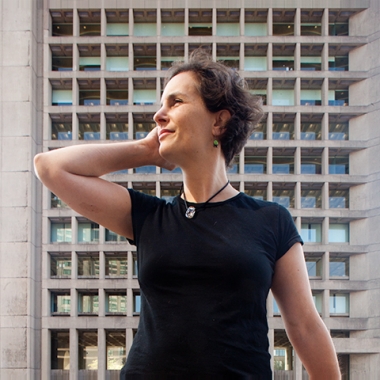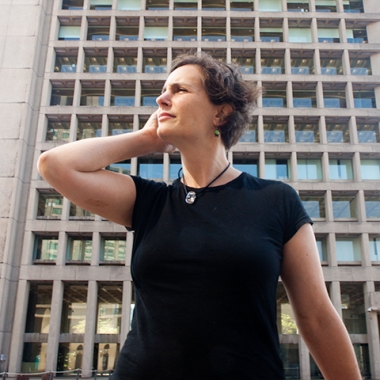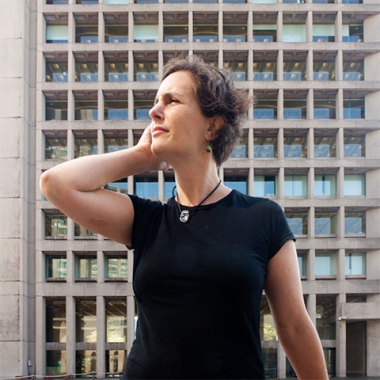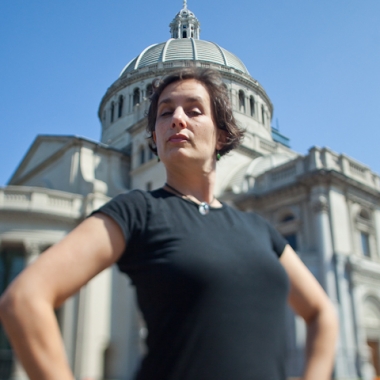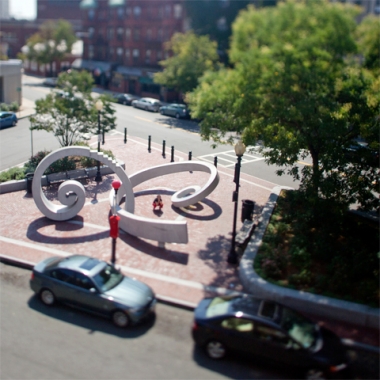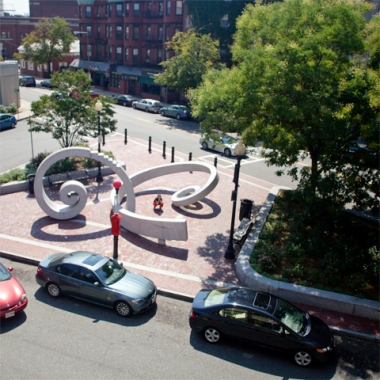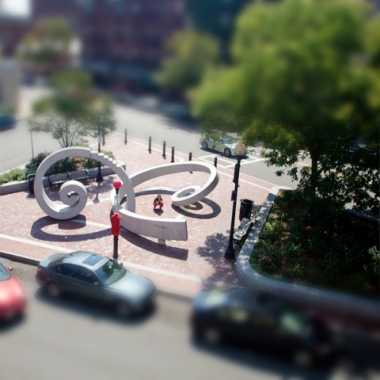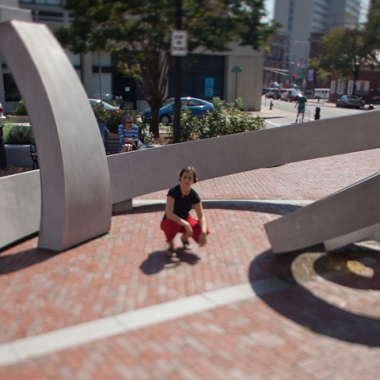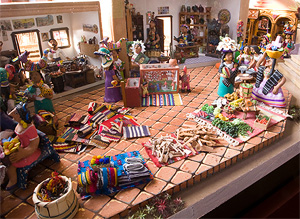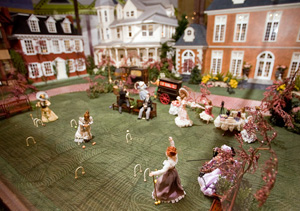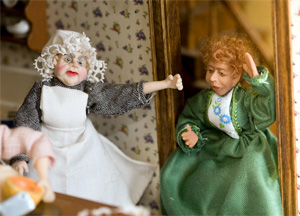This shows one of the "real" reasons people would shell out a few thousand dollars for a tilt-shift lens for a 35mm-size camera — so that buildings that are tilting back can be straightened up, primarily for serious architectural photography.
Rather than aim the camera up at Nicole and the building I shifted the lens.
Compare this to panel 2 where I aimed the camera up instead: the building tilts back.

